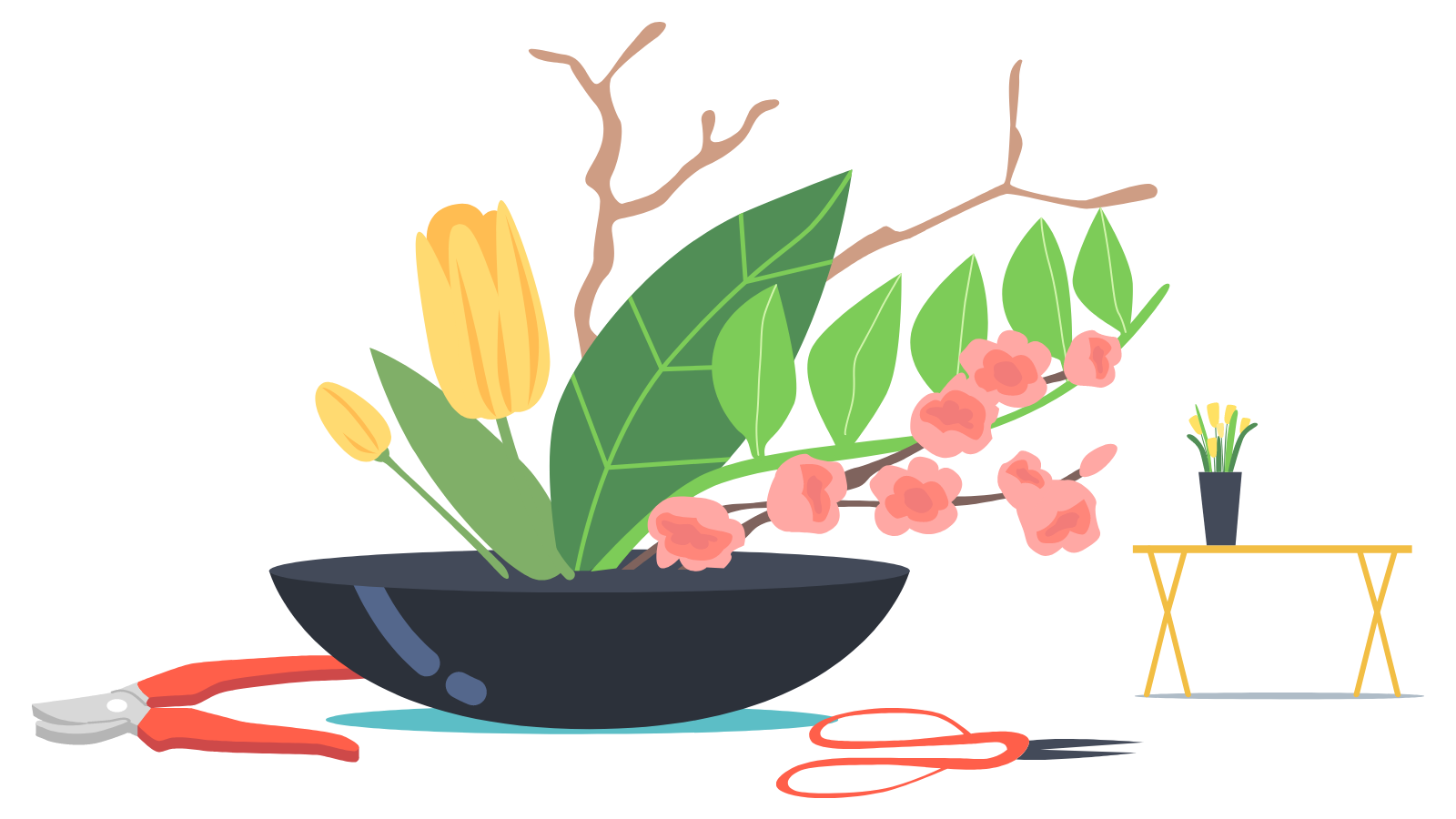
Learn about the unique style, history and method of this Japanese art.
By Roxanne Ringer, Assistant Branch Manager, Kingstowne Library
Beautiful Bouquets
Have you ever wondered about flower arranging? The life and movement flower arrangements bring to a room can be both comforting and make you think. Who arranges the flowers and what are they trying to show you with the way they do it?
Ikebana is the Japanese art of flower arranging: “ike” means “alive” or “arrange” and “bana” means “flower.” This art form truly showcases the personality of the artist. Sofu Teshigahara, founder of the Sogetsu School of Ikebana, explains this perfectly: “Ikebana is not just about sticking a flower into a vase; it is about the love and need of the artist to create beautiful forms. Ikebana is not just about flowers; it is about the person who arranges them.”
An Ancient Art
The Encyclopedia Britannica dates the start of Ikebana in Japan to the sixth century, when it was introduced there by Chinese Buddhist missionaries. Ikebana has since evolved into several schools of style ranging from the most formal — the classic “Rikka” — to freestyle. Each style still showcases the personality of the artist and elements of color, form, balance and texture.
 Understanding Ikebana
Understanding Ikebana
Everyone can appreciate and enjoy Ikebana. The technique is based on nature, linear lines and a simplistic form. When creating or viewing an Ikebana arrangement, the scalene triangle — a triangle with no equal sides or angles — will be your guide. Like the sides of the triangle, the arrangement has three components:
- Shin, the first branch to be included, is the tallest of the arrangement.
- Soe, the second branch, is the medium-height component of the arrangement.
- Tai is the third and shortest branch.
Once the Ikebana arrangement has been created, complementary flowers called ashirai will be added. These complementary elements will also use the same Shin, Soe and Tai height scale.
The next time you see a vase of flowers, take a closer look! See if you can gain more insight into the artist’s vision by looking for these Ikebana techniques and patterns.
Diagram illustration: Original design by Karly Kremposky, Children's Assistant at Pohick Regional Library.

